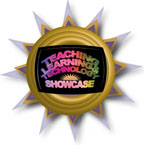
(Author’s note: This is the first in a series about the faculty demostrations scheduled for K-State’s technology showcase March 13. Information is excerpted from the complete list of faculty demonstrations on the ksushowcase.wordpress.com website.)
The Teaching, Learning, and Technology Showcase is 10 a.m.-1:30 p.m. Tuesday, March 13, in the K-State Student Union Ballroom. All faculty/staff are invited to attend and see demos, visit with vendors, and win prizes. Pre-registration is required at ksushowcase.wordpress.com/registration and closes March 9.
“Online teaching and learning” is a popular theme evidenced by these faculty demonstrations scheduled for the technology showcase.
The Real World: Real Experiences Through Online Learning — What’s the difference between distance education and “real” classes? See demos of assignments that engage distance students in learning “where the rubber meets the road,” or, where life really counts. Enhance communication through “off-road” technology such as instant messaging, flip cams, and videoconferencing.
A New Age: A New Audience — Look at current trends and national demographics and the need for new approaches to teaching. See how one professor has transitioned from a traditional distance delivery format to an online delivery format, and how content and technology were integrated.
Keeping Up With the Geeks: Teaching in the Online Environment — These technologies will help you transform on-campus courses into online courses without needing your own geek squad. Technologies include Dropbox, Prezi, Diigo, Jing, and Campus Pack.
Personal Financial Planning Skills With Time Value of Money, Trading on Margin, and Short Selling — This online demonstration will show tools developed to train distance-based graduate students in time value of money, margin trading, and short selling.
E-Learning Faculty Module Wiki — This wiki is an online resource for faculty who need assistance as they develop coursework. The wiki is for all levels of experience, and more than 25 K-State faculty/staff have contributed to the project. K-State’s goal is to ensure that all courses offered to distance students are well designed, expertly taught, and adhere to legal considerations.
Utilizing Outside Experts While Maintaining Course Consistency — The topic of One Health encompasses all the interconnections between human, animal, and environmental health. An online, graduate-level One Health course is being built that utilizes experts from across campus and beyond. This demo will show how consistency within the course is being maintained for students while utilizing numerous topic experts.
Using a Video Camera to Enhance F2F and Online Learning — Video cameras are a great tool to enhance learning from face-to-face experiences, especially in courses where social dynamics or group dynamics are addressed. Recorded experiences can then be uploaded to K-State Online for archiving and viewing. Learn how to easily use a video camera to enhance classroom or online learning experiences.
Digital Innovations in Research, Learning, and Discovery at K-State Libraries — See demos of the newly created “Librarian” role in K-State Online and ways to “embed” a librarian into courses. Learn about instructional videos and other learning objects that can be created and embedded into courses. (Also: the new LibGuides platform for customizing course and subject-guide research; and a new discovery tool for finding articles, books, and more with a single search.)
Portfolios and Participation Rubrics: A Dynamic Duo for Online Assessment — This program introduces the use of portfolios and participation rubrics. It highlights creative ways to engage online classes in their use as effective assessment tools.
Creating the Online Lecture: Utilizing Adobe Presenter for Distance Education — Stop by to discuss the various ways Adobe Presenter was used to create an online course, Foundations of Homeland Security.
Creating Interactive Staff Education With SoftChalk — Need to create a learning object, a lesson, a short course, or a whole group of lessons? This demonstration shows how to use SoftChalk to develop interactive staff education modules, and using K-State Online to document staff completion of training.
Video Streaming / Adobe Connect (Internet-based communications tools) — Adobe Connect is used for online webinars, research collaboration, teaching at a distance, and as an online meeting tool. Video streaming offers opportunities for live broadcasts of seminars, workshops, and special guest speakers, plus recordings for playback.
Using Virtual Worlds for Teaching — Demonstrations on how virtual worlds like OpenSim, OSgrid, Reaction Grid, or Second Life can be used in teaching.
Challenges of Merging Learning Techniques in K-State General Entomology Distance Education — The distance education course ENTOM 312 General Entomology began in Fall 2011, utilizing traditional PowerPoint and Quicktime movie formats to deliver 16 learning modules. A lab course involves over 500 high-quality, multi-angle images and Quicktime movies of major insect orders and species. This effort was the first such attempt to augment the online General Entomology course with a digital laboratory that helps students to learn about insect morphology (form and function) based on a virtual insect collection.